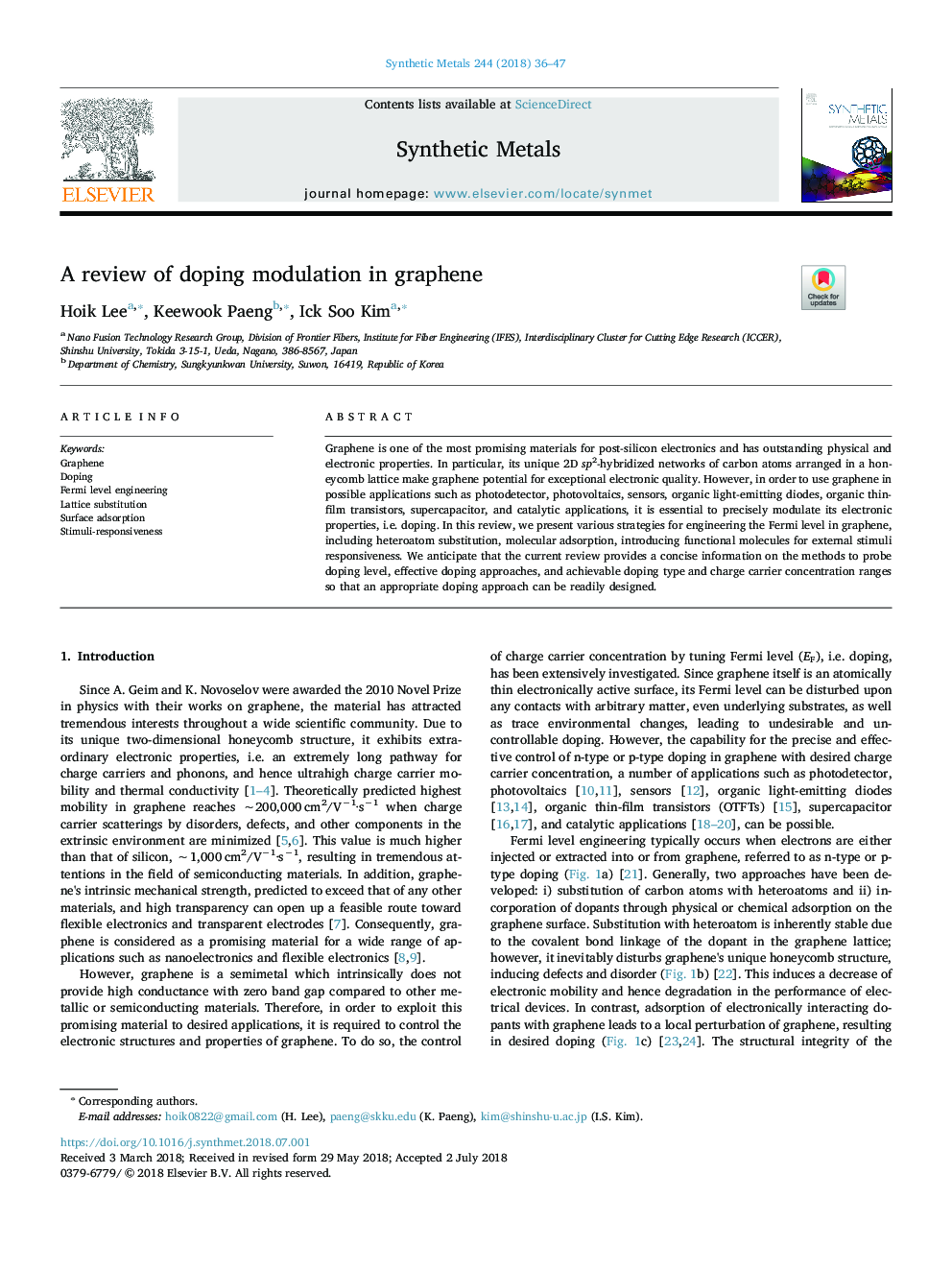| Article ID | Journal | Published Year | Pages | File Type |
|---|---|---|---|---|
| 7873369 | Synthetic Metals | 2018 | 12 Pages |
Abstract
Graphene is one of the most promising materials for post-silicon electronics and has outstanding physical and electronic properties. In particular, its unique 2D sp2-hybridized networks of carbon atoms arranged in a honeycomb lattice make graphene potential for exceptional electronic quality. However, in order to use graphene in possible applications such as photodetector, photovoltaics, sensors, organic light-emitting diodes, organic thin-film transistors, supercapacitor, and catalytic applications, it is essential to precisely modulate its electronic properties, i.e. doping. In this review, we present various strategies for engineering the Fermi level in graphene, including heteroatom substitution, molecular adsorption, introducing functional molecules for external stimuli responsiveness. We anticipate that the current review provides a concise information on the methods to probe doping level, effective doping approaches, and achievable doping type and charge carrier concentration ranges so that an appropriate doping approach can be readily designed.
Related Topics
Physical Sciences and Engineering
Materials Science
Biomaterials
Authors
Hoik Lee, Keewook Paeng, Ick Soo Kim,
